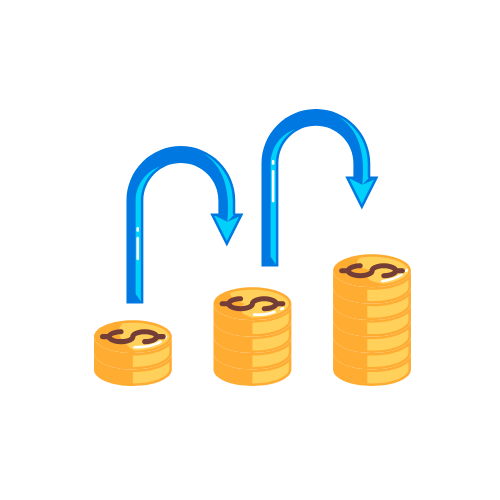💰 Ages 13–17: Future Investors
How Compound Interest Works
Ever heard the saying, “Let your money make money”?
That’s exactly what compound interest does – and the earlier you understand it, the better off your future self will be.
Let’s break it down in a way that makes sense (and cents!) for teenagers ready to step into the world of investing, saving, and long-term wealth building.

💡 What Is Compound Interest?
Compound interest is when you earn interest on your initial money (called the principal) AND on the interest you’ve already earned.
It’s like a snowball rolling down a hill – it starts small but builds and builds, getting bigger and faster the longer it rolls.
In the world of money, time is your best friend.
🧠 How It Works – A Quick Example
Let’s say you put $500 into a savings account at a 5% interest rate per year:
- Year 1: You earn 5% of $500 =
$25
New balance = $525
- Year 2: You earn 5% of $525 =
$26.25
New balance = $551.25
- Year 3: You earn 5% of $551.25 =
$27.56
New balance = $578.81
Notice something?
Your interest keeps growing because you're earning interest on your interest.

🔁 Simple Interest vs Compound Interest
| Type | What You Earn Interest On | Result |
|---|---|---|
| Simple Interest | Just the original amount | Slower growth |
| Compound Interest | Original amount + previous interest | Faster growth over time! |
🕒 Why Starting Young Is Powerful
The secret weapon behind compound interest?
Time.
The earlier you start saving or investing, the more time your money has to grow.
Even if you start with small amounts, starting young can lead to huge results down the track.
💰 Let’s Compare:
| Person | Starts Saving At | Monthly Saving | Total by Age 40 (5% interest) |
|---|---|---|---|
| Sam | Age 15 | $50 | Over $18,000 |
| Taylor | Age 25 | $50 | Around $10,000 |
That’s a big difference – all because of time and compound growth!
🎯 Where Do You Find Compound Interest?
Compound interest isn't just something you find in maths class – it’s everywhere in the real world.
You’ll see it in:
- 💳 High-interest savings accounts
- 🏦 Term deposits
- 📈 Managed funds and superannuation
- 🧾 Shares and reinvested dividends
Just be careful – compound interest also works against you with things like credit cards, where interest can build up fast if you're not paying off the balance.
🛠️ Tools for Teenage Investors
Even before you can invest big dollars, you can start building good habits:
✅ Open a
high-interest youth savings account
✅ Set a
monthly saving goal
✅ Use free
compound interest calculators
online to see how your money could grow
✅ Talk to a parent or guardian about
investing in your future, like learning about ETFs or superannuation
💬 Quick Quiz: Can You Guess?
If you save $10 a week starting at age 15, how much will you have by 30 with 5% compound interest?
👉 Answer: Around $12,700 – not bad for a weekly smoothie’s worth of savings!

🧭 Future Investor Tip
“The best time to start was yesterday.
The second-best time is today.”
Start small.
Stay consistent.
Let time (and compound interest) do the heavy lifting.
🏁 Final Thought
Opening a bank account is more than just a cool milestone — it’s your first step toward financial freedom.
The earlier you start learning how to manage money, the more confident and independent you’ll become. Whether you're saving for a phone, your first car, or your future, a bank account is the tool that helps turn your goals into reality.
Start smart.
Save smart.
Spend smart.
You're not just a teenager — you're a Future Investor.



